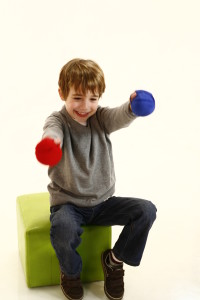The Timocco Plan, Body Balance: Stable Sitting is another our new plans to support children across a variety of settings, including the classroom and home. Follow the instructions for how to set the plan up in order to see the true benefits and get the most out of this plan!
Who is it for? This plan is designed for children who need to improve their bodies adaptations when in a seated position. The games selected for the sessions of this Plan are for children between the developmental ages of 3 and 5.
What does it do? The Timocco “Balance” Training Plan aims to assist the child in improving static and dynamic balance in sitting, so as to allow them to automatically and efficiently make the necessary postural adaptations so as to sit up straight as well as maintain balance throughout a range of day to day activities done in a sitting position – such as working at a desk in the classroom, sitting next to a table at meal time and sitting safely at bath time.
Functional/ IEP Goal: Automatically and efficiently make postural adaptations in order to maintain balance (throughout the day – can be replaced with – while sitting in the classroom – during meal time – during bath time)
Below are the skills and the level that they are targeted at within this Plan.
| SKILL | LEVEL |
| Postural control: | – The ability to maintain an upright trunk position in a midline position
-Returning to midline -Isolation of trunk from head –Isometric agonist-antagonist control -Stabilizing during reach |
| Endurance: | – Strength, endurance, and stability of the shoulder girdle and of the neck muscles to support long term participation in classroom tasks – in sitting and standing
– Strength, endurance, and stability of the trunk muscles to aid in providing a stable base for arm use during sitting, allow for an upright sitting position for extended sitting (in classroom activities). |
| Balance – Static: | -The ability to hold a stationary position with control
– Ankle responses -Trunk righting responses -Positions: quadruped (on all four/hands and knees), sitting in a chair with back support and without (a stool) and sitting at an angle to the computer. |
| Balance – Dynamic: | -The ability to remain balanced while engaged in continuous movement.
-To be able to respond with the changing demands of classroom interaction while sitting at a desk |


Leave a Reply